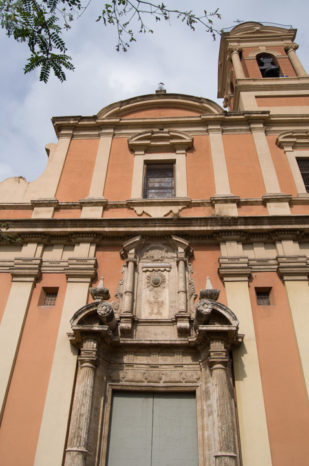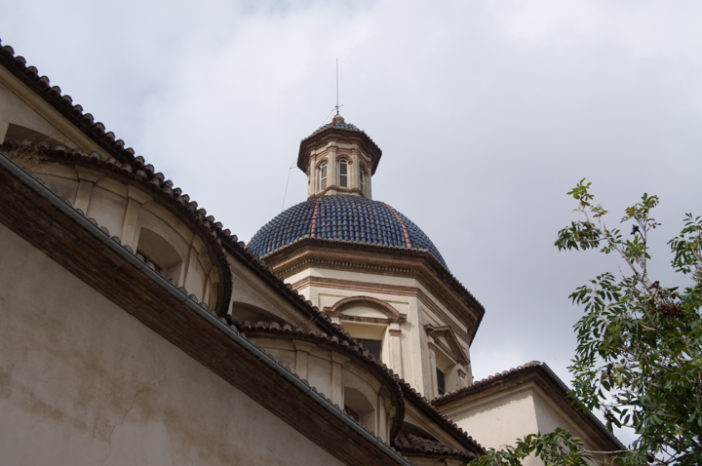Parish Church of San Miguel and San Sebastián
In the expansion of the city to the west is this church that belonged to the Convent of Minims of San Francisco de Paula. Begun in 1726, it was completed in 1739 according to the traces of José de Cardona y Pertusa. It is a church with a Latin cross floor plan with chapels between buttresses, connected to each other, and a semicircular headboard. It is divided into four sections. The chapels closest to the foot of the church are covered with low vaults, while the other three are covered with orange domes on shells. The roof of the nave is a barrel vault walled with lunettes. Above the transept stands a dome on shells on an octagonal drum and cap peralted outside. The interior is arranged by Corinthian pilasters on high pedestals between which the semicircular arches that give way to the side chapels open. The carved ornamentation arranged in the intrados of the arches of the side chapels.
Also richly decorated with carvings is the centrally planned sacristy covered with an octagonal dome. On the Gospel side next to the transept is the Chapel of San Francisco de Paula. It is a chapel with a Greek cross floor plan with beveled angles, and a half-orange dome decorated with stucco raised on four trapezoidal shells. On the same side of the church is the chapel of Blessed Gaspar Bono, built from 1786 by the academic architect Joaquín Martínez.
It has a circular floor plan with an attached rectangular camarin. A structure of Doric pilasters is developed on which an architrave of order develops on which a drum is turned that alternates portholes and medallions in which the dome of half orange apples, with sections that alternate the huts and the paintings of trapezoidal panels, in the center of which a lantern opens. Today the camarin is gone. A tiled plinth made in 1742 for this church runs through the interior. The temple had a side door on the side of the transept that overlooks Calle Quart, which is currently located in the parish of Santa Catalina de Siena in the Orriols neighborhood. The main façade is developed in two bodies of different height, which were originally joined by lateral fins, currently being only one of them.
The lower body has three hollows, the two sides blinded, between Doric pilasters on which an architrave develops. The entrance doorway has two sections, the lower lintel flanked by Doric columns on pedestals. In the upper part there is an ediculum with relief in the center framed by two columns and topped by a split curved pediment. At the far right of the façade stands the bell tower built after the construction of the church. The current one was made in the early twentieth century by Carlos Carbonell in modernist style. The project, dated 1906, had more modernist characteristics that were later nuanced in the execution. The convent was demolished leaving only the church that was preserved through the intervention of the Academy of Fine Arts of San Carlos.



Dades bàsiques
Plaza San Sebastián, 1
46008 Valencia